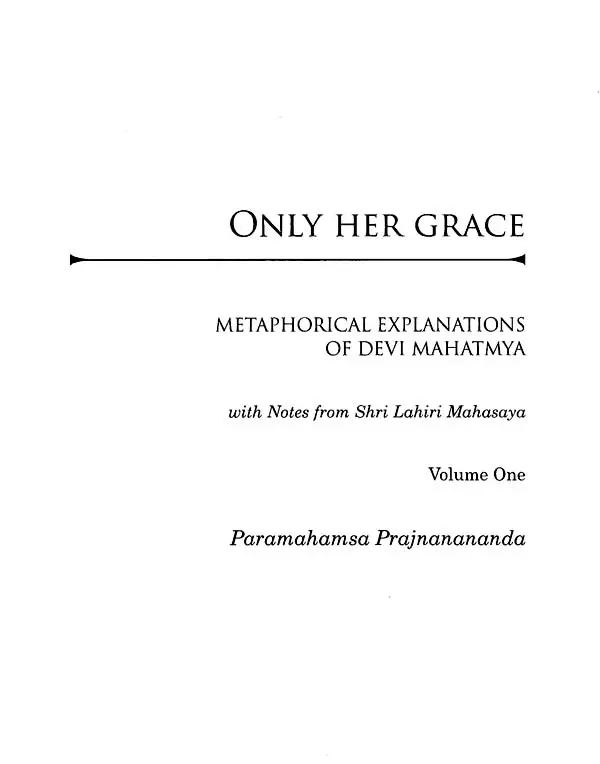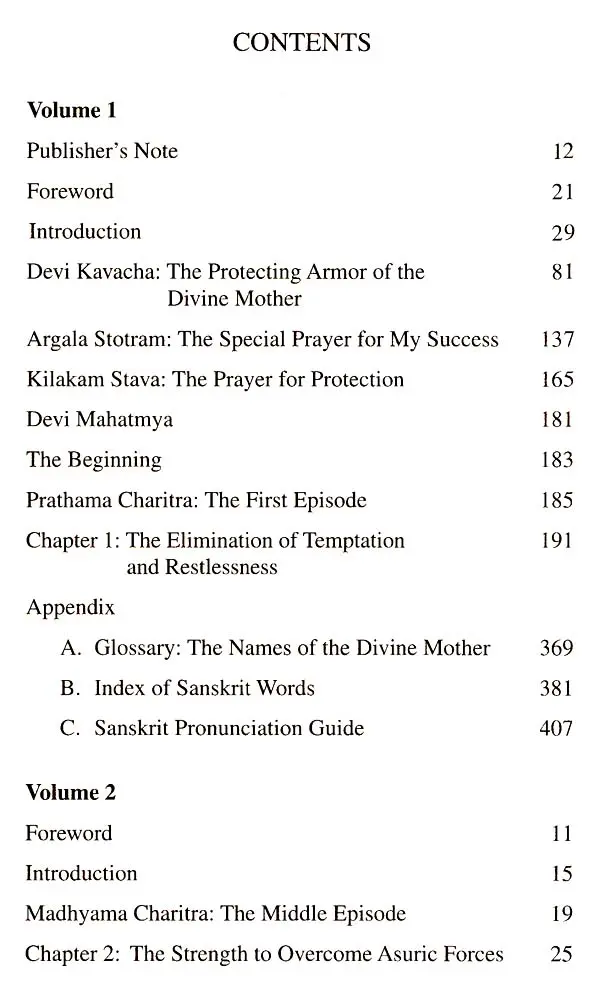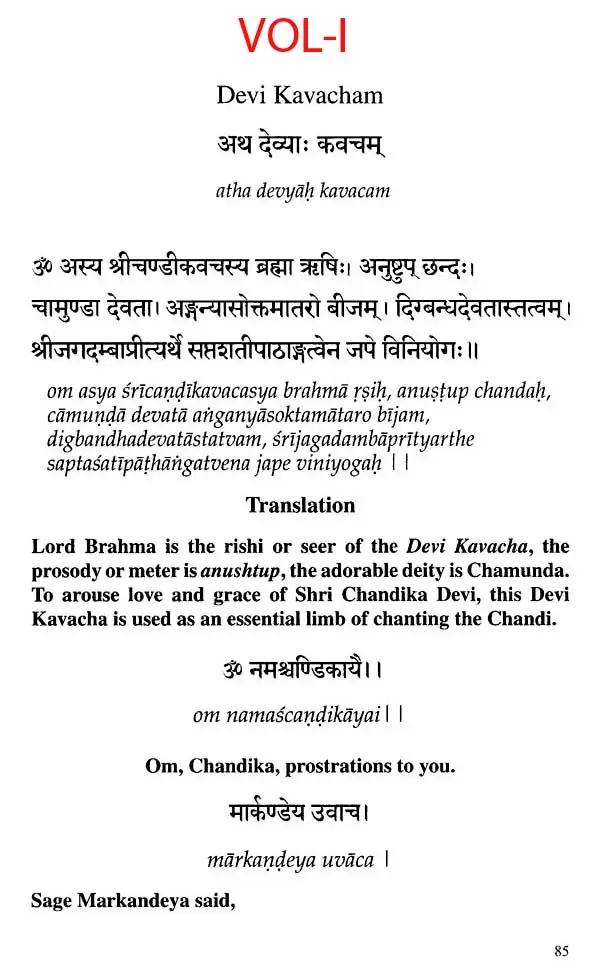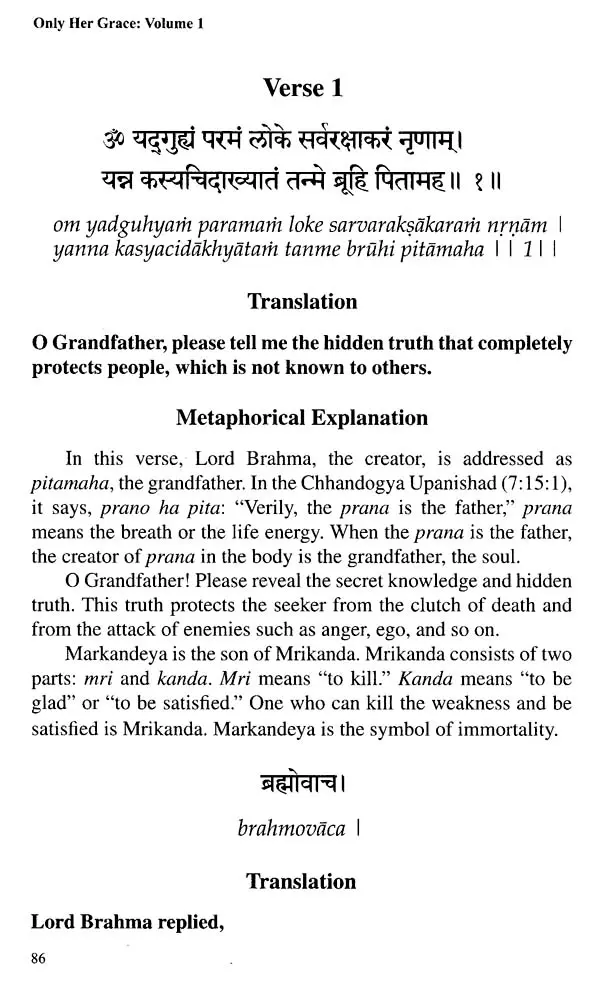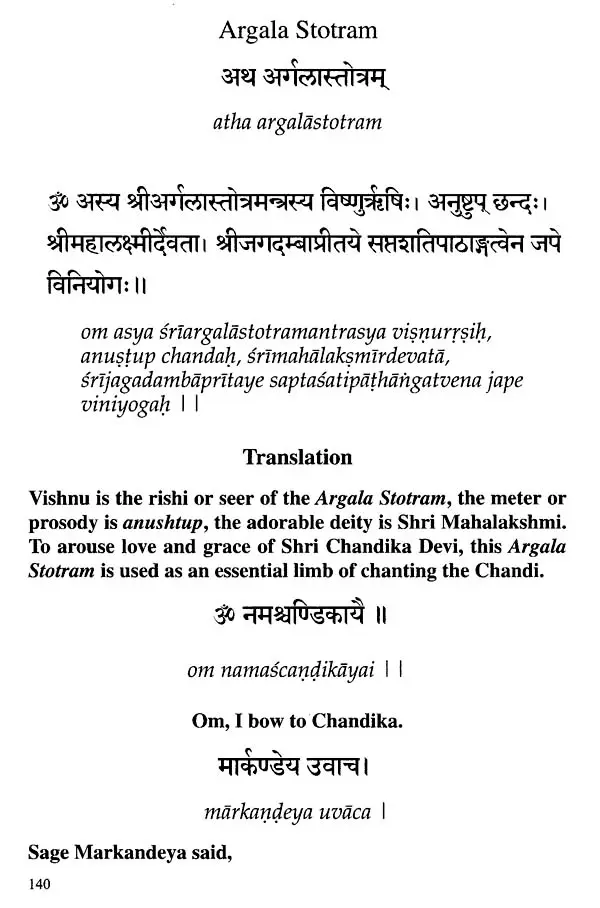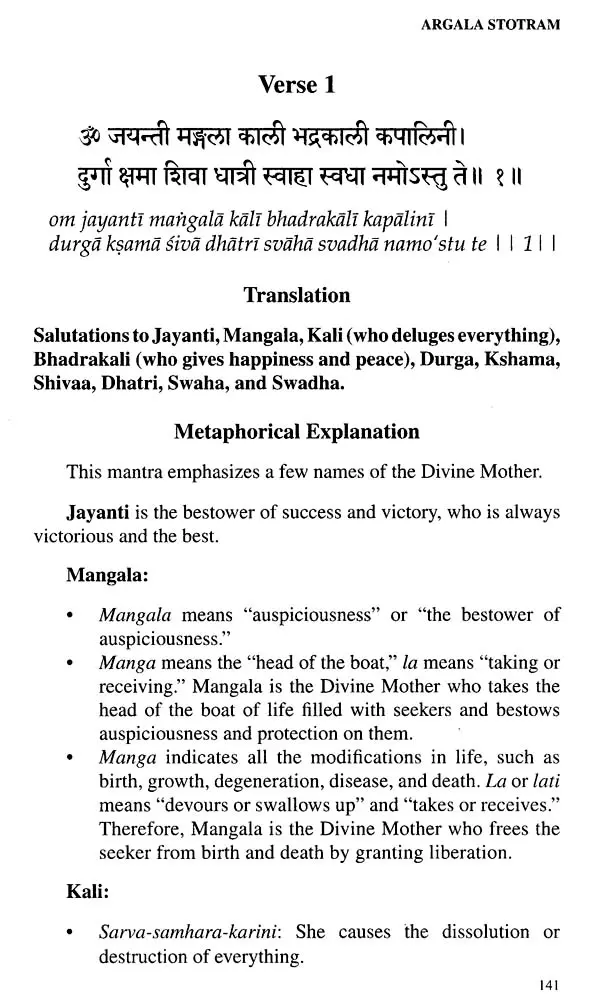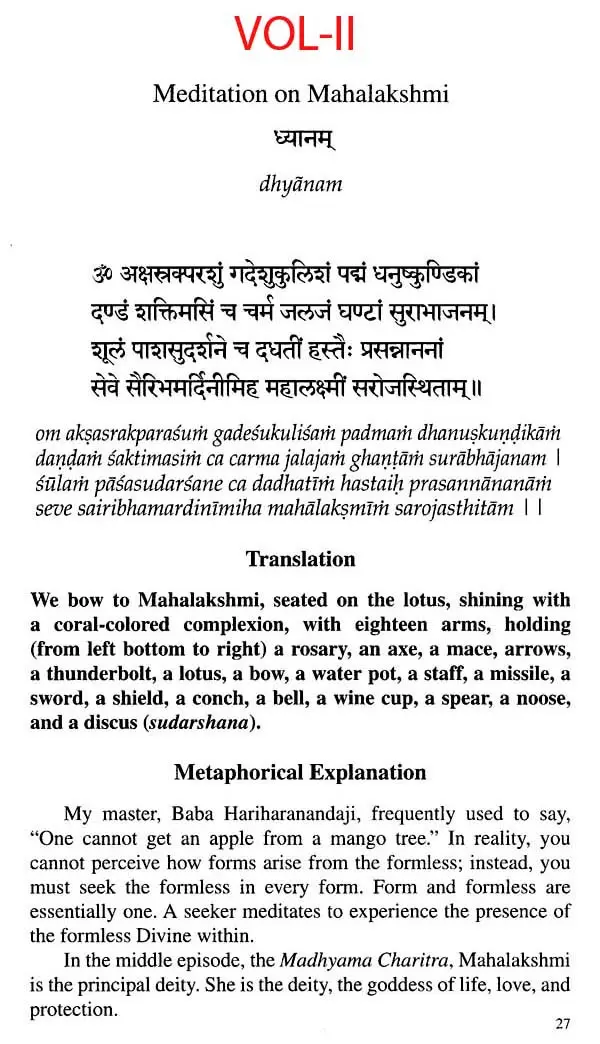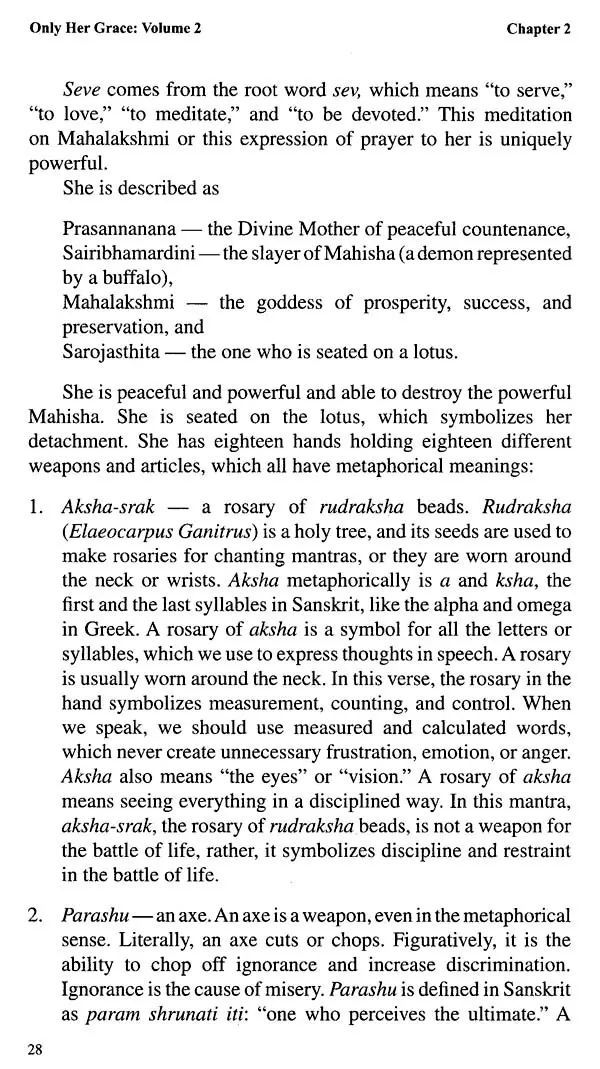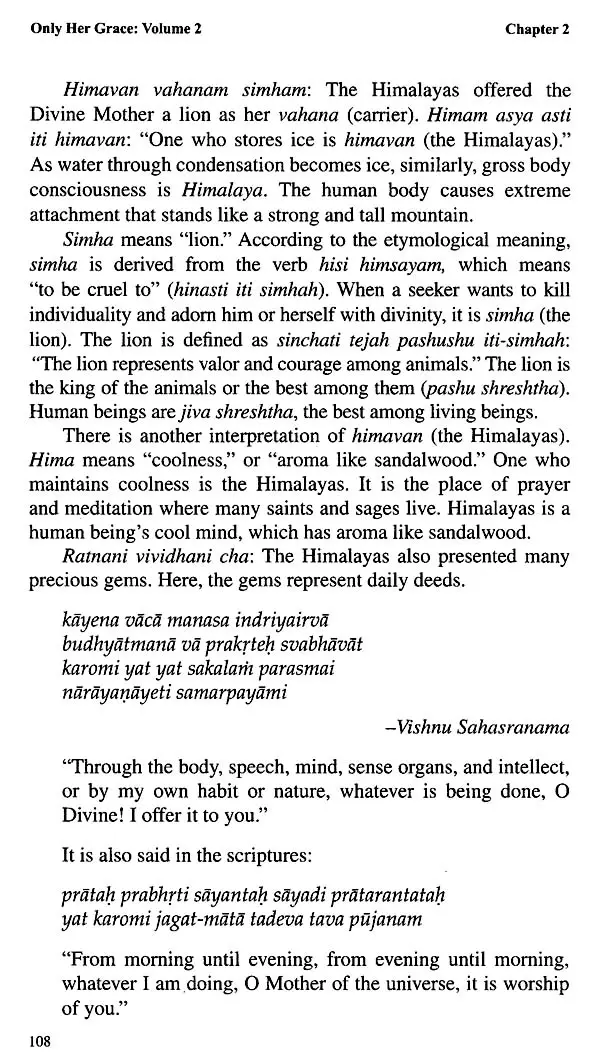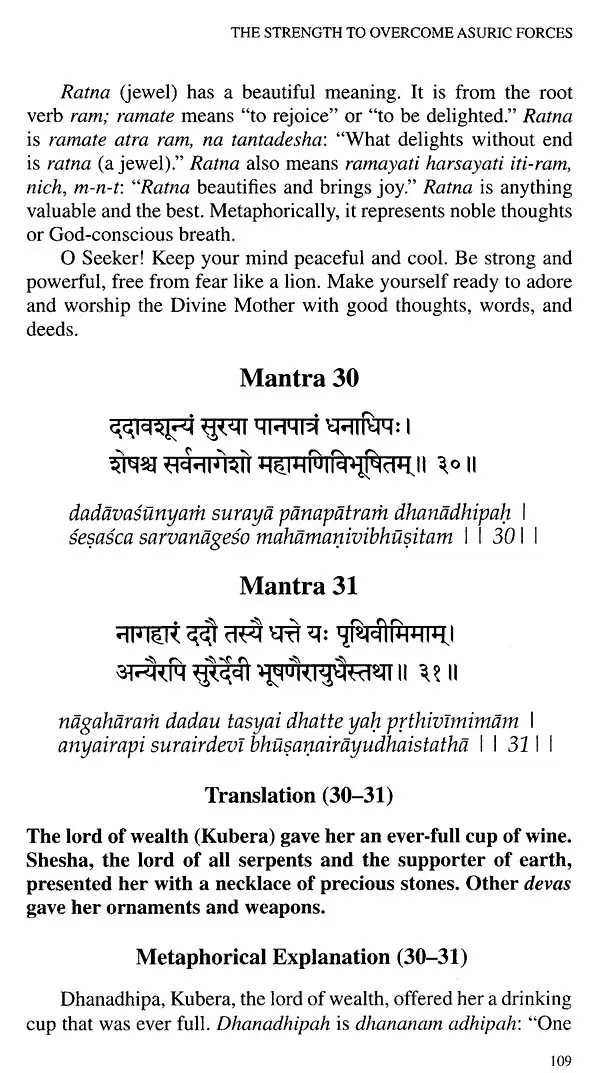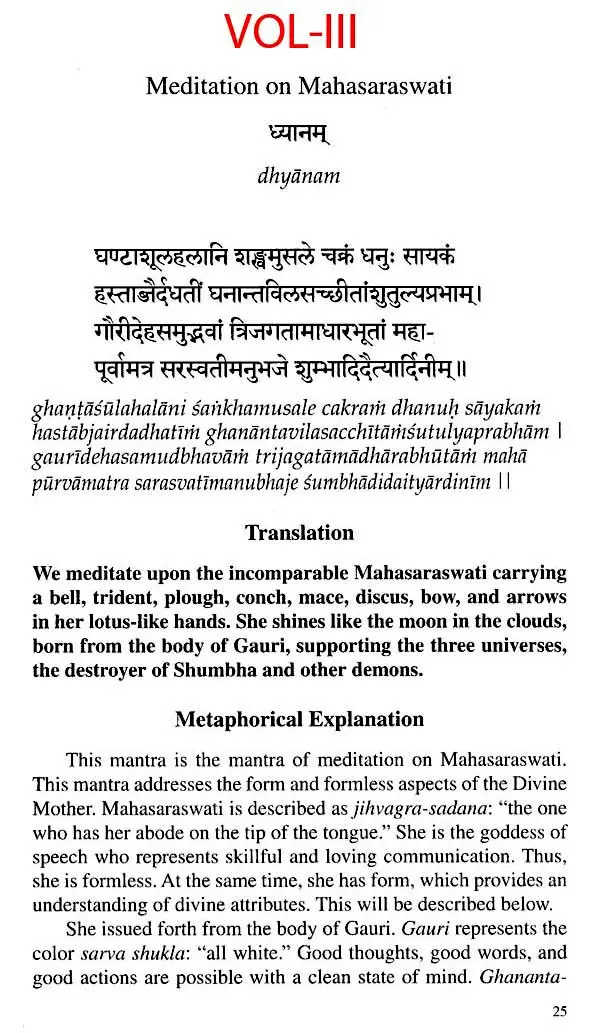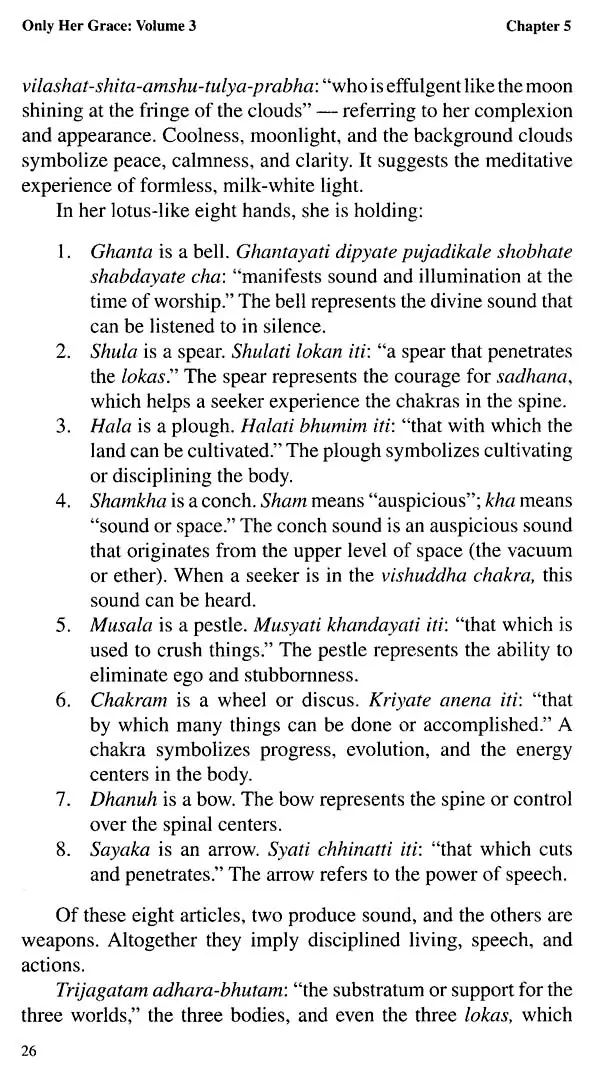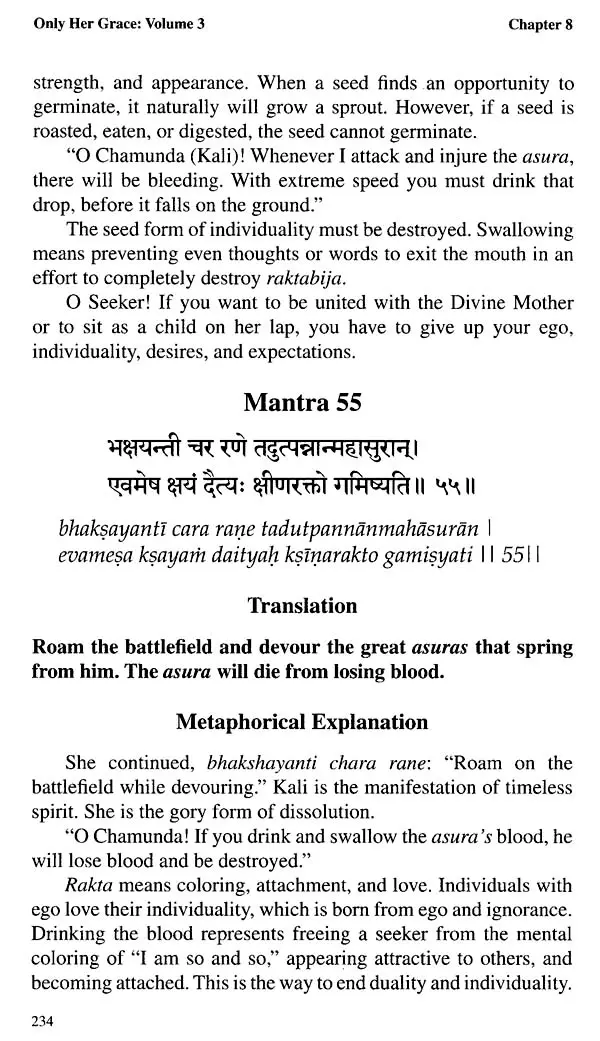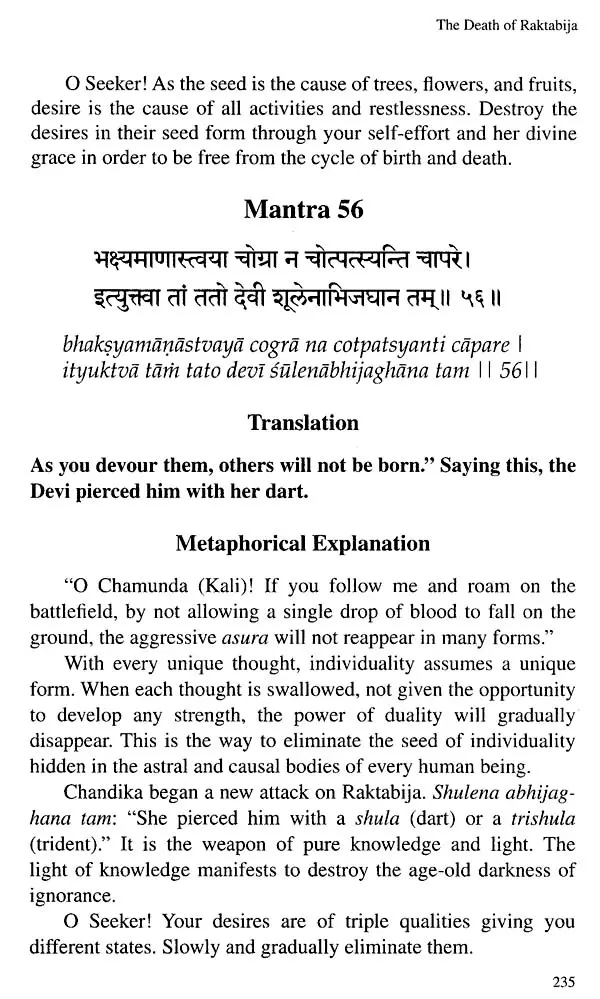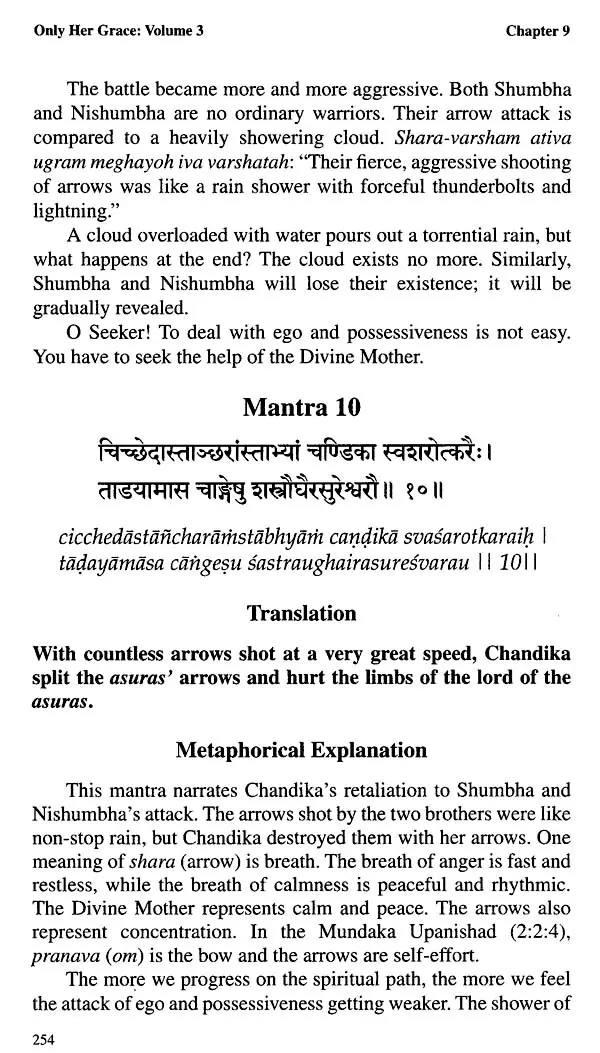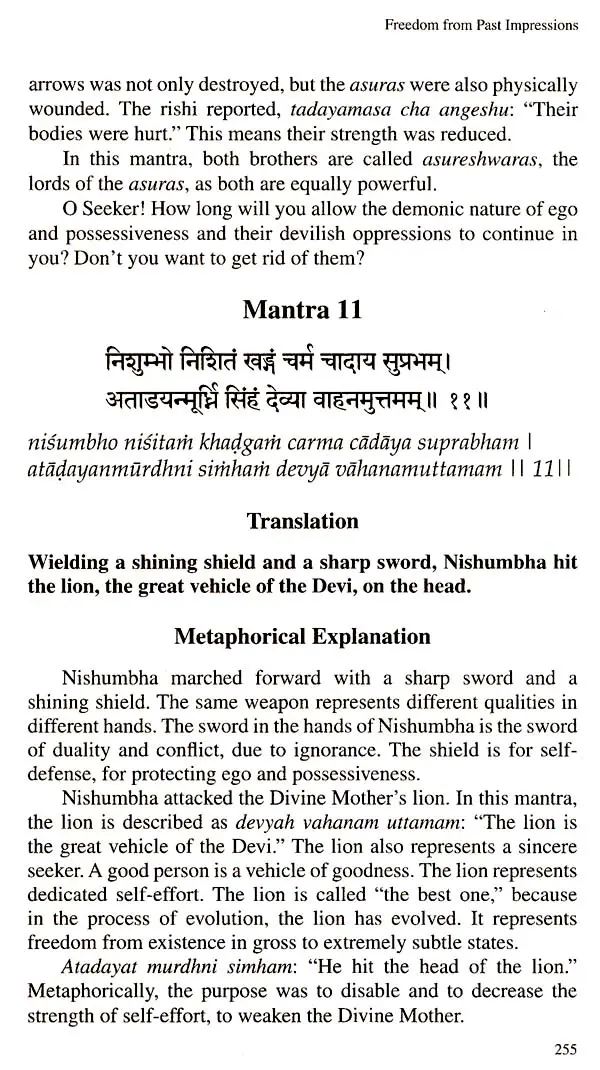
Only Her Grace-Metaphorical Explanations of Devi Mahatmya With Notes from Shri Lahiri Mahasaya (Set of Three Volumes) (An Old and Rare Book)
Book Specification
| Item Code: | UAK385 |
| Author: | Paramahamsa Prajnanananda |
| Publisher: | Kriya Yoga Mission, Kolkata |
| Language: | Sanskrit Text with English Translation |
| Edition: | 2012 |
| ISBN: | 978390000335 |
| Pages: | 1325 |
| Cover: | PAPERBACK |
| Other Details | 8.50 X 5.50 inch |
| Weight | 1.14 kg |
Book Description
"Is it humanly possible to analyze the uniqueness of the Divine Mother's desire and make observations about it? Paramahamsa Prajnanananda has given a suitable reply to this question through his metaphorical interpretation of the verses of the Chandi. Paramahamsaji's interpretation of the characters of the Chandi, Suratha and Samadhi (both are disciples) and Medha (preceptor) is unique, making readers aware of the importance of both life in matter and life in eternal consciousness....this voluminous work, Saptashati Chandi, is an outcome of the blessings of the Divine Mother. Paramahamsa Prajnanananda is an elevated soul who has reached the highest stage of superconsciousness because of his indescribable devotion to the Divine Mother. Needless to say, this book bears the signature of his enlightenment and wisdom."
When His Holiness Paramahamsa Swami Prajnanananda referred to his three-volume manuscript on the Chandi and asked me to give my observations, I deemed it a divine dictate and immediately swung into action. I was able to glance through the manuscript through the grace of His Holiness and his disciples. and was surprised and stunned to see such a voluminous, well documented research work on the Saptashati Chandi spanning 1300 pages. Nothing moves in this universe without Her desire.. No creation is possible without Her divine intervention and involvement. Hence, after going through the book, along with an exhaustive introduction by Swamiji, I concluded that it is not only his unparalleled wisdom, but the wish of the Divine Mother that manifested in each and every sentence, nay words, of the book.
Is it humanly possible to analyze the uniqueness of the Divine Mother's desire and make observations about it? Paramahamsa Swami Prajnanananda has given a suitable reply to this question. in his book through his metaphorical interpretation of the verses of the Chandi, and through the characters like Suratha, Samadhi, and Medha in particular. The most vibrant way of communicating a message is believed to be an interactive mode. Several scriptures in India are in the form of dialogues between the teacher and the taught. Shrimad Bhagavad Gita is a glaring example of this effective system of imparting spiritual knowledge. It is a dialogue betweent Yogeswara Krishna, an eternal preceptor, and Dhanurdhara Partha, an ardent disciple. Both of them symbolize the eternity of an effective teaching-learning process. Kurukshetra is very often considered as the human body or life (इदं शरीरं कौन्तेय क्षेत्रमित्यभिधीयते) as a whole, where the constant battle between good and evil is going on. The main purpose of the dialogue between the teacher and the taught is to show the proper path to the individual entities, so that they should not escape from the battlefield. On the other hand, after obtaining the divine instructions, one should get himself properly equipped to ensure a victory of divine properties over the evil forces, not for his personal benefit, but for the welfare of the entire human community. The Saptashati Chandi is another example of an effective dialogue for awakening a life in consciousness or life in spirit that gives us everlasting peace, prosperity, and bliss.
When I was a child growing up in a village in India, which was surrounded by natural wilderness, I often observed all of the Divine Mother's beautiful creations. I happily watched the flowers bloom every morning or evening and contemplated how God could create such beautiful flowers of different types,colors, and fragrances. Plucking them and making garlands, I used them in the daily worship of the Divine in our family temple. This created a sense of gratitude in me. Today's flowers become tomorrow's fruits and vegetables. Understanding this slow growth and ripening helped me accept that life is a gradual process of growth and maturity.
As a child, I was awestruck by nature, amazed by the endless sky with its majestic appearances, and struck by the way its colors: changed at different times of the day and with the seasons. I not only enjoyed nature's entertainment, but also the vastness of the Divine Mother. The changing of the clouds and their movements gave me a picture of heaven. The rising sun dispelled the darkness of night. As the sun's brightness increased throughout the day, and until it faded and finally set. I watched and prayed as my parents had taught me in my childhood. The myriad twinkling stars at night and the cool light of the moon, waxing and waning, created a reflective mood in me. When the deep dark clouds of the monsoon covered the sky, the sun hid behind this veil, revealing the great and powerful manifestations of light and darkness and their unique power over us. I was filled with terror when the turbulent, devastating winds of tropical cyclones disturbed nature and living beings, bearing witness to Mother Nature's consuming state-her dance of destruction. At such times, I could sense the immense power of the divine universe.
Watching the chirping birds of many colors, seeing the play of domestic animals and also playing with them, looking for wild animals in the evening and sometimes experiencing a childlike fear of them. I thought about the power and weakness in each one. A mouse that was able to make holes in the ground with its tiny, sharp teeth could cut many things, but a snake could also devour it. All of these differences appeared to be the play of the Divine Mother.
In the course of time, I discovered that a tiny flower or a butterfly, a cool wind or a turbulent cyclone, an educated city dweller or an innocent villager, all have their own power, strength, abilities, and glory. Why is there so much diversity? It is the grace of the Divine in each form. As I have moved along the path of my life, I have gradually experienced the beauty of that power. At the same time, I have noticed that many people are hungry for power. People's greed and their oppressive nature caused me to ponder: What is this power? Why are people so eager to accumulate and possess more power in order to be powerful?
People consider the following qualities as very attractive and alluring: money power, status, manpower, political power, beauty as power, muscle power, thought power, the power of knowledge, the power of persuasion, the power to attract others, the power of manipulation, the power of creativity, the power of musical and other talents and skills, and the power of written expression. As the king has a sword, I have a pen in hand. The pen is mightier than the sword; it can create new light and life through right understanding of life and its problems. What is our proper relation to power?
When I was small, listening to my mother's stories, I asked her countless questions. Calm and composed, she answered me with love and described the natures of divine and demonic people. People with divine qualities are intelligent, and they use their accomplishments for the good of others, while the demonic ones love falsehood and power and tyrannize others. In the Bhagavad Gita, I found elaborate descriptions of divine and demonic natures. Slowly, I accepted a life of serving and loving instead of a life of grabbing and greed.
**Contents and Sample Pages**
